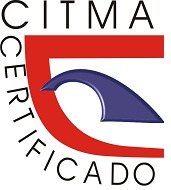Architecture for advanced interactivity in DTV adapted to Cuba’s conditions
Keywords:
software architecture, free software, interactive digital televisionAbstract
Digital Television allows the incorporation and transmission of data that are interpreted by set-top boxes and that the end user perceives with a certain degree of interactivity. Currently, most of the services and technologies used to achieve interactivity on digital television are limited by the charging of high fees and their source code is not available to adapt their operation to local conditions. Among the interactive applications are video games and virtual tours, which contribute to making the use of television more attractive and educational. This research proposes an architecture adapted to the technological conditions of Cuba, which contributes to incorporating advanced interactivity functionalities in Digital Television. To this end, an analysis of the available technologies is carried out, opting for a free software solution that allows the creation of these applications and their integration into the same system following a microservices based architecture and the HbbTV (Hybrid Broadcast Broadband Television) standard.
The development of this research contributes to enhancing the technological heritage of the country. As television is a widely used means of dissemination nowadays, its implementation is reflected as a clear benefit to different sectors of society. In addition, it promotes the growth of the technological sovereignty of the country, being a point of reference in the development of video games, virtual tours, or any other type of interactive content for Digital Television, since a characterization of the main attributes that such applications should have is created.
References
Abásolo Guerrero, M. J., Rosado Álvarez, M. M., Silva, T., Pina, J., Socorro, R., Kulesza, R., Pesado, P. M. (2021). La Televisión Digital Interactiva para el mejoramiento de los pueblos latinoamericanos. Paper presented at the XXIII Workshop de Investigadores en Ciencias de la Computación (WICC 2021, Chilecito, La Rioja).
Amador González, M. (2018). Módulo para la extracción de información de fuentes externas para la conformación de noticias en la televisión digital en Cuba. Bachelor thesis report Universidad Tecnológica de La Habana José Antonio Echeverría(CUJAE).
Boronat, F., Marfil, D., Montagud, M., & Pastor, J. (2018). HbbTV-Compliant Platform for Hybrid Media Delivery and Synchronization on Single- and Multi-Device Scenarios. IEEE Transactions on Broadcasting, 64(3): 721-746. doi:10.1109/TBC.2017.2781124
Dávila Sacoto, M. A. (2012). Diseño de una plataforma de software para Televisión Digital interactiva de un canal de deportes utilizando GINGA-NCL LUA.
De la Peña Sarracén, E. (2019). El Módulo Juegos de la Colección El Navegante en su versión multiplataforma. Paper presented at the [2019-MADRID] Congreso Internacional de Tecnología, Ciencia y Sociedad.
Desa, U. (2016). Transforming our world: The 2030 agenda for sustainable development.
Eslava Arce, I. (2014). Estudio del estándar de televisión digital interactiva HbbTV e implementación de aplicación final.
Fam, P. A., Paquelet, S., Crussière, M., Hélard, J. F., & Brétillon, P. (2016). Analytical Derivation and Optimization of a Hybrid Unicast-Broadcast Network for Linear Services. IEEE Transactions on Broadcasting, 62(4): 890-902. doi:10.1109/TBC.2016.2593403
Frómeta García, A. (2021). Diseño y desarrollo de videojuego de corte educativo en entorno interactivo de TV digital. Universidad Tecnológica de La Habana (CUJAE),
García Crespo, A., Ruíz Mezcua, B., González Carrasco, I., & Cuadrado, J. L. L. (2012). Servicios Interactivos y Accesibilidad en la Televisión Digital, una Oportunidad para Reducir la Brecha Digital. Rev. Iberoam. de Tecnol. del Aprendiz., 7(2): 86-93.
Gavrila, C., Popescu, V., Fadda, M., Anedda, M., & Murroni, M. (2020). On the suitability of HbbTV for unified smart home experience. IEEE Transactions on Broadcasting, 67(1): 253-262.
Ginsburg, M. (2022). ECONOMIC AND MEDIA WAR AGAINST SOCIALIST SOCIETIES
THE CASE OF US–CUBAN RELATIONS. International Journal of Cuban Studies, 14(2): 272-308. Recuperado de: https://www.jstor.org/stable/48710326
Hammershøj, A., Nowak, A., Hansen, J. K., & Stefanović, Č. (2020). The Next-Generation Television Broadcasting Test Platform in Copenhagen. Paper presented at the 2020 13th CMI Conference on Cybersecurity and Privacy (CMI)-Digital Transformation-Potentials and Challenges (51275).
Hammond, M. (2017). Release of HbbTV/DVB Companion Synchronisation Tools and Streams - BBC R&D. Recuperado de: https://www.bbc.co.uk/rd/blog/2017-05-second-screen-streams-tools-companion
HbbTV-Certification-Group. The Benefit of HBBTVOPAPP for Operators and Vertical Models - The Open Standard for a Unified TV Experience Across Different Platforms. Recuperado de: https://www.hbbtv.org/wp-content/uploads/2018/09/HbbTV-MG-00632-003-WhitepaperHbbTVOpApp-v1.1.pdf
HbbTV. (2022). HbbTV Deployment Countries. Recuperado de: https://www.hbbtv.org/deployments/
ITU-R. Integrated Broadcast-Broadband Systems in Report ITU-R BT.2267-10. Recuperado de: https://www.itu.int/dmspub/itu-r/opb/rep/R-REP-BT.2267-6-2016-PDF-E.pdf
Jakšić, B., Milošević, I., Petrović, M., Ilić, S., Bojanić, S., & Vasić, S. (2017). Characteristics of hybrid broadcast broadband television (HbbTV). Bulletin of Natural Sciences Research, 7(1).
Millo Sánchez, R., Morell Pérez, C., García González, C., & Siles Siles, I. (2018). La interactividad en la Televisión Digital: su desarrollo en Cuba. Revista Cubana de Ciencias Informáticas, 12(1): 205-219.
Pallavicini, F., Pepe, A., & Mantovani, F. (2021). Commercial off-the-shelf video games for reducing stress and anxiety: systematic review. JMIR mental health, 8(8): e28150.
Pina Amargós, J., Álvarez Goenaga, D., Villarroel Ramos, D., Amador González, M., & Socorro Llanes, R. (2018). New functionalities of digital terrestrial television in cuba to contribute to the informatization of society. Revista Cubana de Ciencias Informáticas, 12: 158-172.
Pina Amargós, J. D., Socorro Llanes, R., Paredes Miranda, D., Amador González, M., & Villarroel Ramos, D. L. (2019). Incorporation of immediacy, dynamics and interactivity to digital terrestrial television services in Cuba through TVC+. Paper presented at the Iberoamerican Conference on Applications and Usability of Interactive TV.
Sotelo, R., Joskowicz, J., & Rondán, N. (2018). An integrated broadcast-broadband system that merges ISDB-T with HbbTV 2.0. IEEE Transactions on Broadcasting, 64(3): 709-720.
W3C. (2021). World Wide Web Consortium.
Yang, T., Lai, I. K. W., Fan, Z. B., & Mo, Q. M. (2021). The impact of a 360 virtual tour on the reduction of psychological stress caused by COVID-19. Technology in Society, 64: 101514.
Zárate Torres, D. J. (2012). Diseño e implementación de una aplicación interactiva para educación a distancia: T-learning a través de un canal TDT universitario y un canal IPTV en la ciudad de Lima.
Published
How to Cite
Issue
Section
License
Copyright (c) 2023 Ariel Alfonso Fernández Santana, Joaquín Pina Amargós

This work is licensed under a Creative Commons Attribution-NonCommercial 4.0 International License.













